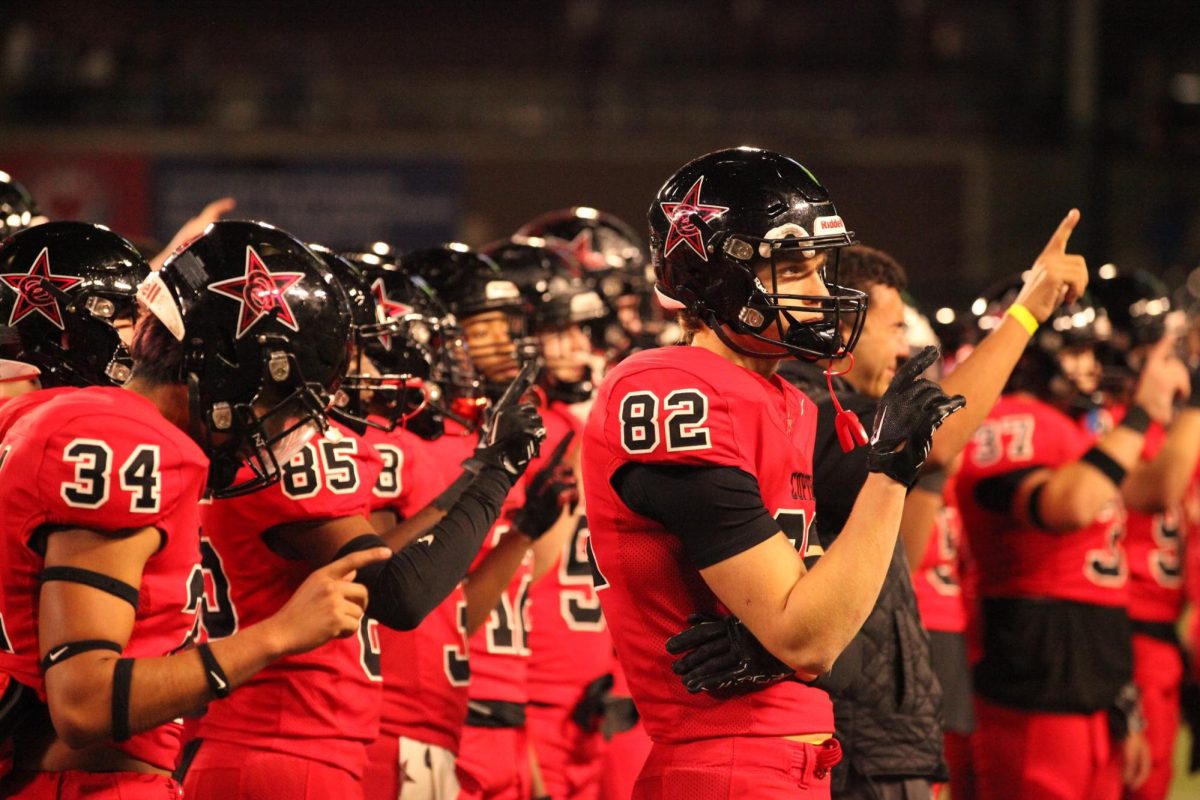By Alex Nicoll
Staff Writer

Why do you workout? Is your season on the line?You have a big race coming up? You want to push your mind and body to test the outer limits of human determination? Or are you just trying to squeeze a little more cardio into your work week? It doesn’t matter. We all need strength. And drinking Muscle Milk after your workout helps build strength.
This is the message greeting the thirsty eyes of athletes everywhere when they pick up an 11 ounce carton of Muscle Milk, in the chocolate flavor of course. Athletes are pressured with the idea that these supplements will take their talents to the next level. That magical protein powders and miracle energy shots will cut seconds off their 400-meter times, add inches to their verticals and pounds to their deadlift.
“There are supposed to synthesize your muscles and I work out a lot so I need it,” Coppell High School junior baseball player David Rodriguez said.
Their craving is not satisfied by the thirst-quenching liquid but rather by the idea that these athletes know this supplement will give them a boost over their competition.
This begs the question: what are athletes putting in their bodies?
“There are a lot of benefits to it if you take the right steps towards it,” CHS assistant baseball coach Clint Rushing said. “To build muscle you have to have the right amount of protein and the right amount of carbs and all that kind of stuff. If you are not getting it in your regular diet you can supplement to get those extra things.”
America’s most reputable protein supplement corporations like Advocare and Muscle Milk do provide athletes with an extra protein or nutrients. However the supplement business has grown to the point where the FDA does not even know every remedy out there on the market.
“You have to make sure the supplements you use are NCAA approved, that is the biggest thing,” CHS assistant football coach Stu Johnson said. “They check for everything.”
The NCAA does not ban supplements by name but warns that many contain banned substances that are unapproved by the organization. Some banned substances include amphetamine and testosterone.
Coaches at Coppell are wary of the possible destructive side effects that these supplement nutrition could cause, especially from certain businesses.
“There are a lot of companies that are not required by the government to list every single product that is in what they are selling,” Rushing said. “This is why you have to make sure it is NCAA approved.
In an abstract from an article published by the Department of Exercise Science at the University of Massachusetts, the credibility of multiple nutritional supplements are called into question stating that there is little to no data to support the claims that they provide an increase in muscle mass.
Dr. Tony Swaldi, a Coppell physician with years of medical experience, warns young athletes against the dangers of these miracle powders or bars.
“Soy protein can cause breast development in males and excessive casein protein has been linked to tumor growth,” Swaldi said.
While this calls for alarm to athletes everywhere another problem that cannot be overlooked is if popular proteins such as whey, soy or casein are beneficial at all at purporting weight gain and muscle growth.
The New York University’s Langone Medical Center published an article that investigated the therapeutic uses for whey protein and found that there is no more than minimal that it helps accelerate muscle growth and even less evidence that whey protein had better results than other forms of protein such as casein.
Authors from another piece in The Journal of Nutrition, a publication solely devoted to topics on all things nutrients since 1928, found that the most common forms of protein while whey, soy and casein proteins are beneficial they can be enhanced by a blend of soy and dairy proteins to help capitalize on the delivery of amino acids.
These medical centers along with Swaldi and Johnson all argue that the protein gained from these supplements can be replaced for the much healthier alternative of adding more heavy-protein laden food such as chicken, fish, nuts and beef to an athlete’s diet.
“Food based proteins, appropriate training and adequate rest and recovery are paramount for healthy weight gain. An elite sports nutritionist told me she advises a glass of chocolate milk with every meal for her athletes looking to gain extra weight. I prefer peanut butter,” Swaldi said.
Reasons for why high school athletes choose to take whey or soy compared to just eating more range from the supplements tasting better and just the convenience of them.
“It is just quicker to shove protein down your throat,” Rodriguez said.
The allure of taking protein in this form is heightened by its access and portability. Many gyms offer juice bars where patrons can buy protein shakes after working out and being able to just take a bar or a bottle full of powder to a practice or weight-lifting session makes it easier for athletes to take the supplements in the recommended time of one hour after the workout.
And with the results that they promise, there is no way you could blame an athlete for falling for the idea of bulging muscles, 30 pounds of solid weight and getting the “athlete’s body”
“You don’t really see it immediately but once you start to take a lot of it, you start gaining a lot of weight,” Rodriguez said.
There is an argument out there that says the reason there has been a huge spike in protein supplements and weight gainers is because of the change in the caliber of athletes. For example athletes in the past used to just play competitively in school year, but now are playing year round. With the emergence of the Amatuer Athletic Union and other select sport organizations, the appeal to athletes to use supplements is even greater.
“The value society places on athletic performance seems to be increasing – we pay athletes more and more to entertain us- so there is a high demand for that type of skill,” Swaldi said. “This will continue to drive competition for the foreseeable future.”
The role of an athlete, once confined to the season of their sport had transformed into a year round job. Everything they do is under the microscope of their parents, coaches, competitors and scouts everywhere.
With managing their diet, continually exerting energy to keep in performance shape and always looking for that next big thing that will give them an edge, athletes are pressured to do anything in their power to be the best even at the cost of their own health.
“Pressure will always be there,” Johnson said. “It is a matter of the athletes doing the research and being willing to talk to the right people to get good advice and not just say ‘oh this person is taking this’ and what they are using might not be helpful for them.”



























lebenshilfe • Dec 22, 2015 at 9:38 pm
Mutter feels particularly close to the female Virtuosi,
the youngest of whom is a 14-year-old Dutch violinist. ‘ Last November, she
brought 13 of them (including five young women) along with a
veteran harpsichordist to the North America for concertizing and extra-curricular fun. With the band taking
up the full stage the entertainers belted out the
catchy tune for The Voice live audience as well as fans watching at home.